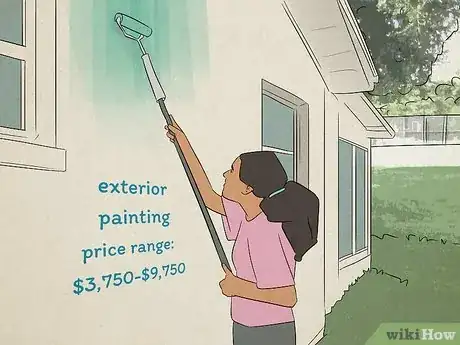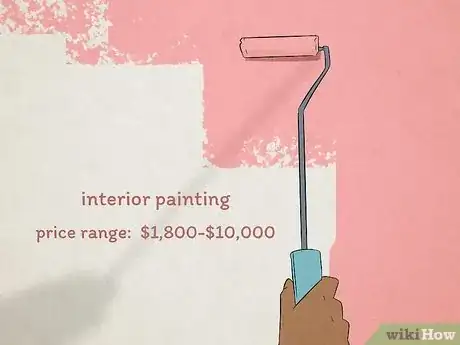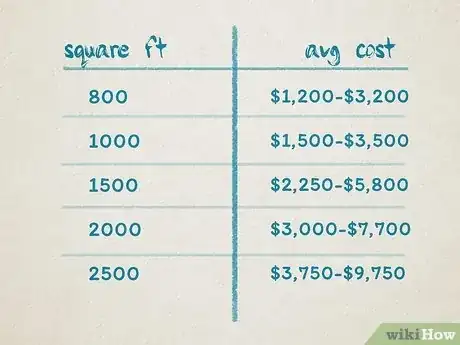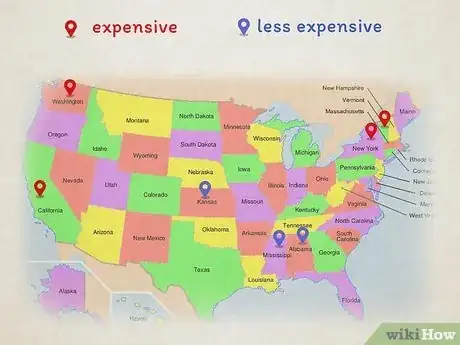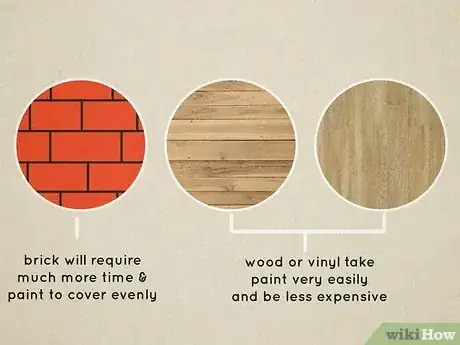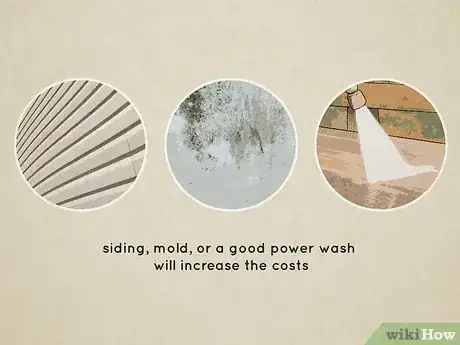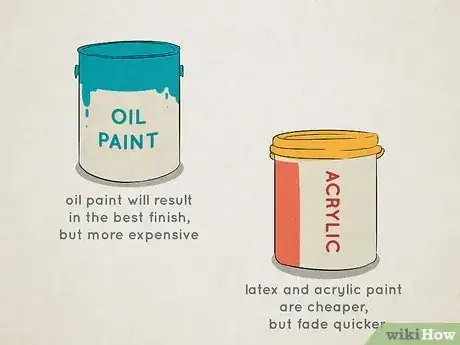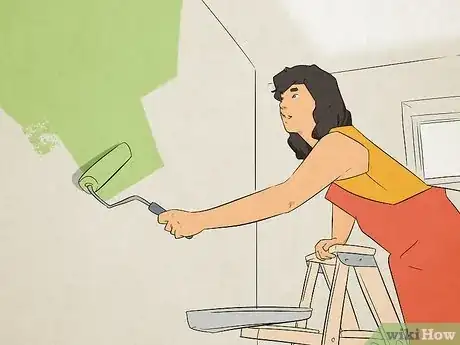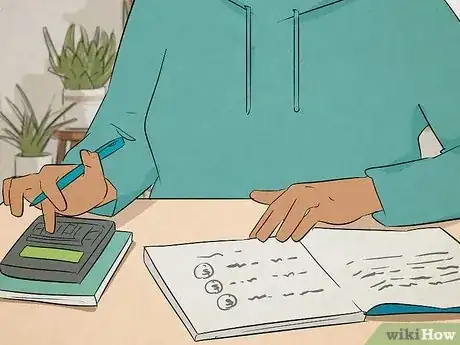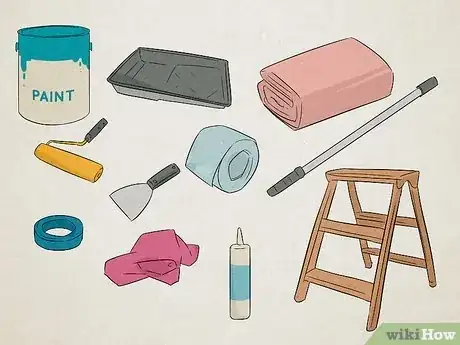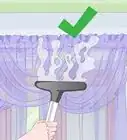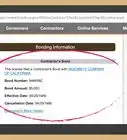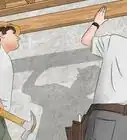This article was co-authored by Archie Guerrero. Archie Guerrero is a Commercial and Residential Painting Specialist and the Operations Manager for DGP Painting in Austin, Texas. With a decade of experience, Archie specializes in interior and exterior painting and staining, cabinet refinishing, and wallpaper and popcorn removal. DGP Painting offers clients environmentally friendly paint materials and top-of-the-line paint products. DGP Painting has an A+ rating with the BBB and has been in Austin’s “Best of the Best.”
There are 7 references cited in this article, which can be found at the bottom of the page.
A fresh coat of paint can change your home completely, but it can also cost a lot of change. Painting your house can feel overwhelming, and it can be difficult to gauge how much painting your house will cost, but we’re here to guide you through the process. Continue reading for common ways to calculate the cost of painting, as well as a breakdown of factors that contribute to this cost.
Steps
Average Cost
-
1The average exterior paint job costs roughly $5,400. Exterior painting ranges from $3,750-$9,750. For a smaller house, about 1,100 sq. ft., the lowest cost is about $2,500. On the other side of the spectrum, a large 3-story home could be up to $12,000.[1] X Research source
-
2An average interior painting job costs about $5,200. The price range for interior painting is anywhere from $1,800-$10,000. The cost to paint one room is generally $450, whereas to paint a lavish 4,000 sq. ft. home with many intricacies could be upwards of $16,000.[2] X Research source
Estimating Costs
-
Estimate the costs by square footage. Square footage is the most important thing to consider when calculating interior or exterior painting costs. In general, professional painters charge anywhere from $1.5-$4 per square foot. The more area painters have to cover, the more materials and labor you’ll need to account for.[3] X Research source
- Square footage: 800 Average Total Cost: $1,200-$3,200
- Square footage: 1,000 Average Total Cost: $1,500-$3,500
- Square footage: 1,500 Average Total Cost: $2,250-$5,800
- Square footage: 2,000 Average Total Cost: $3,000-$7,700
- Square footage: 2,500 Average Total Cost: $3,750-$9,750
Other Facts That Affect Cost
-
1Location Costs to paint a house vary greatly between states, and even between zip codes where the price of goods and services differ. Keep in mind when doing research online that the average cost to paint a home in Minnesota will be much lower than the cost to paint a home in California. Check with professional painters in your area for a precise quote.[4] X Research source
-
2House material Some materials adhere to paint better than others which makes for a quick and easy paint job. Sidings like brick will require much more time and paint to cover evenly, whereas other sidings like wood or vinyl take paint very easily and be less expensive. If you have a more difficult house material, it may raise the total cost of painting.[5] X Research source
- The number of layers you need to apply is a big factor here. You may need to repaint brick 2-3 times, while sanded drywall might take to the paint right away!
-
3House condition Warped siding, mold, or even just needing a good power wash will increase the costs of painting a house. Professional painters will need to spend more time and materials to prep the surface for painting.[6] X Research source
-
4Paint type Oil, latex, and acrylic paint are all great picks for painting a house, but some are more expensive than others. Oil paint will result in the best, smoothest finish, but will run a bit more expensive than the others. Latex and acrylic paint will dry faster and are cheaper, but they’ll also fade quicker.[7] X Research source
- The quality of the paint and the brand might be the biggest variable factor in your costs. However, it’s usually worth it to spend a little extra and get the job done right!
-
5Dramatic change If you’re looking to give your house a complete makeover, be mindful that it could increase the total cost. Going from one light color to another won’t be an issue but, if you want to paint your dark brown house a bright white, your painters might need to double the number of paint coats or apply a primer before painting.[8] X Research source
DIY House Painting
-
1Cut down on costs by doing the smaller painting tasks. You don’t have to do the whole job by yourself to cut down on costs. Consider doing the smaller, more manageable tasks. If you’re painting your exterior, think about renting a power washer to clean your siding or priming your siding. For the interior, you might want to paint your trim, or remove and reinstall the outlet covers.[9] X Research source
-
2Calculate how much paint you’ll need if you want to paint your entire house yourself. If you decide to take on the entire painting project, you’ll be buying lots of paint. For interior painting, multiply the width and height of the area you want to paint, then subtract the area of any windows and doors.[10] X Research source For exterior painting, be sure to retake your measurements as they’ll measure a bit differently than the indoor numbers. Then divide your paintable area by 350, as one gallon of paint will cover approximately 350 square feet.[11] X Research source
- If you’re not up to getting your measuring tape out, take a look at your mortgage closing papers for square footage numbers!
-
3See what additional supplies you need. Every project is unique and will require different tools and supplies, but be prepared to buy more than just paint and brushes. Here’s a list of some supplies you might need:
- Paint
- Paint roller
- Paint roller extension
- Paint tray
- Drop cloths
- Sand paper
- Painter’s tape
- Rags
- Putty knife
- Ladder
- Caulk
You Might Also Like
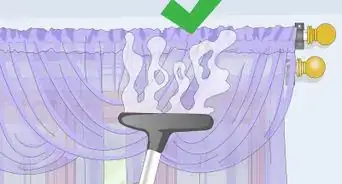
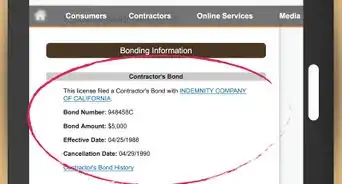
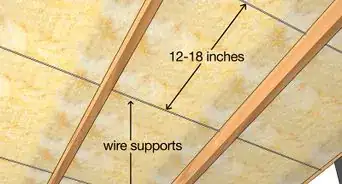
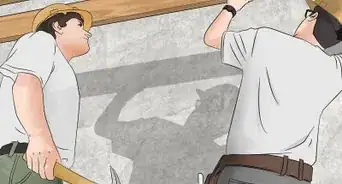

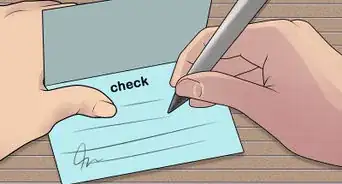
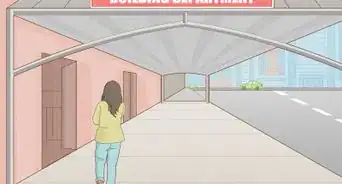
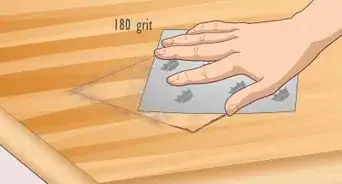




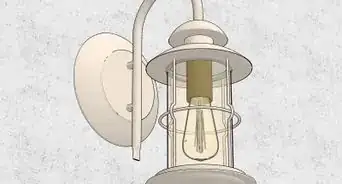 The Main Differences Between Satin Nickel and Brushed Nickel
The Main Differences Between Satin Nickel and Brushed Nickel

References
- ↑ https://www.fixr.com/costs/paint-house-exterior
- ↑ https://www.fixr.com/costs/paint-house
- ↑ https://www.fixr.com/costs/paint-house-exterior
- ↑ https://www.angi.com/articles/cost-paint-house-exterior.htm#prices-by-location
- ↑ https://www.angi.com/articles/cost-paint-house-exterior.htm#prices-by-location
- ↑ https://www.angi.com/articles/cost-paint-house-exterior.htm#prices-by-location
- ↑ https://www.angi.com/articles/cost-paint-house-exterior.htm#prices-by-location
- ↑ https://www.realtor.com/advice/home-improvement/how-much-does-it-cost-to-paint-a-house/
- ↑ https://hometriangle.com/articles/604/tips-to-save-on-the-cost-to-paint-a-house
About This Article

